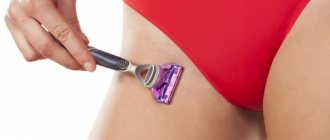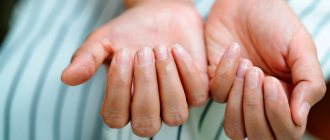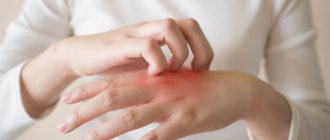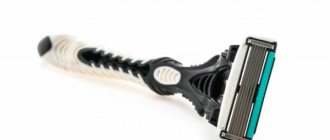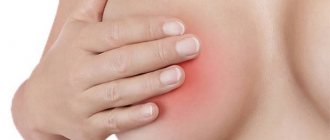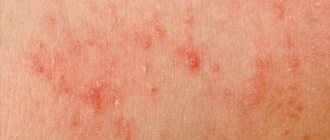Home page » Beauty » Nails
Author of the article
Svetlana Pavlikhina
Reading time: 6 minutes
AA
Feet are often injured due to impact, uncomfortable shoes, and poor care. But when brown spots appear on the nails for no apparent reason, you should look for a problem in the body. It is difficult to determine the cause on your own, so at the first sign of darkening of the plate you should consult a doctor.
The duration and nature of therapy depend on the characteristics, degree and neglect of the pathology, and the age of the patient. Early diagnosis increases the chances of complete relief from the disease.
A spot on the nail is an indicator of a problem
Sometimes a specialist just needs to look at the color and nature of the spot to determine what disease caused it:
- White stripes appear in patients with diseased kidneys and dysfunction of the gastrointestinal tract.
- Yellow formations may indicate poor nutrition and skin diseases.
- Green and brown are due to fungal infection or penetration of Pseudomonas aeruginosa.
- Violet are visualized with a severe hematoma.
- Brown colors are typical for patients with kidney failure. They also appear due to malnutrition or lack of protein and folic acid.
- Black ones indicate serious liver problems.
- Dark brown ones develop with vitamin deficiency, diabetes, and pregnancy.
What is it: description and photo
The nails of a person who does not have health problems should be:
- smooth;
- shiny;
- delicate pink shade;
- with a snow-white clear lunula.
Deviations from the norm are provoked by various reasons, including diseases.
Important. The appearance of dots, spots, grooves or stripes on the nail plate cannot be considered only as a cosmetic defect. Defects often signal diseases that affect internal organs or the nail itself.
Flaws that deserve special attention:
- dark brown;
- rich black color;
- dark blue or greenish tint.
They can appear in the form of dots, round or irregular spots, or stripes. Sometimes the plate turns black completely. The shape of the spot is determined by the reason that provoked its appearance:
- rounded – a consequence of a slight bruise (hematoma);
- in the form of stripes - the result of microtrauma received during active movement, or diseases of the internal organs;
- a shapeless spot (or complete blackening of the nail) is a sign of fungal infection;
- in the form of multiple dots - a signal of problems in the functioning of the liver.
Next in the photo you can see what spots, dots, grooves or other defects look like on the fingernails or toenails.
The appearance of spots under the nails
Most often, brown discoloration of the skin under the plate is associated with injury from an impact. In this case, during the treatment period, the color may change from red to brown and purple.
The appearance of a dark spot under the nail can be caused by the following problems:
- Hyperpigmentation . It is observed in persons with increased sensitivity to ultraviolet radiation and exposure to chemicals. It is temporary.
- Melanoma . Cancer may begin with a slight dark streak. As the tumor grows and tissue is damaged, the spot increases in size and turns black.
- Hemangioma . A benign tumor forms under the plate and is brown-red in color. Despite the fact that the growth is enveloped in blood vessels, it does not cause pain. Sometimes it goes away on its own.
- Diabetes . The appearance of the spot is associated with trophic changes in tissues and metabolic disorders. More common in decompensated forms of the disease.
Localization of pigment areas on nails
Diseases associated with dark spots or small colored stripes on the plate:
- Endocarditis. With inflammation of the heart, excessive sweating, fever, chills, and swelling of the lower extremities are noted. On the nails the disease appears as dots or stripes.
- Lack of vitamin B12. With a lack of folic acid, the plates become brittle and dark areas appear on them.
- Lichen planus. Lichen ruber is characterized by the following symptoms: rash, itching, and the appearance of brown stripes on the nails.
The main causes of darkening of nails
The appearance of brown spots, stripes, and dots on toenails may be due to:
- fungal and bacterial infection;
- nail fold injuries;
- hyperpigmentation;
- diabetes;
- eczema, deprivation;
- lack of vitamins;
- errors in nutrition;
- HIV;
- smoking;
- poor nail care or poor-quality pedicure.
With jaundice, bilirubin levels increase. An excess of pigment turns human skin and plates light brown. The intensity of the tone depends on the severity of the pathology.
Addison's disease is characterized by insufficiency of the adrenal cortex, hyperfunction of the organ.
With an imbalance of aldosterone and cortisol, in addition to nail coloring, rapid weight loss, muscle pain, gastrointestinal pathologies, and an addiction to salty foods are possible.
Psoriasis is an autoimmune disease. As it progresses, the plate can completely separate, and its compaction and delamination are observed.
Infections
Fungal infections can easily be acquired in public places or from using someone else's shoes.
The disease manifests itself as dark spots, redness and itching of the skin, burning, and unpleasant odor from the feet. Nails darken, thicken, flake and crumble.
A bacterial infection most often manifests itself as greening of the nails, but in some cases it combines green and dark brown shades.
Injuries
When struck, the capillaries under the plate are damaged.
First a red spot appears, then it darkens, it can turn brown and even black. In case of extensive damage, the nail peels off completely.
Recommendations and tips
Nail health depends on the individual. It is necessary to carefully monitor the condition of the nail plates. This will help to promptly identify hidden diseases that have affected the body.
In other situations, you can avoid the appearance of darkening on your nails if you follow the recommendations given by experts. Necessary:
- Regularly care for your hands and feet and follow the rules of hygiene. This will help prevent the development of fungal nail infections.
- Do a manicure (pedicure) using only an individual tool or a pre-processed one.
- Visit the bathhouse (sauna) in rubber flip-flops. The same applies to the beach.
- Strengthen your body without exhausting it with diets.
- Learn how to choose the right shoes to avoid injury to your nails and fingers.
- Work with chemicals using rubber gloves.
- Give up the bad habit of biting your nails. This will help avoid unnecessary injuries, and therefore bruises.
- When visiting the pool, use antifungal sprays. Use only a personal towel and shoes.
- When in a public place, treat your hands with antiseptics.
- To refuse from bad habits.
- During seasonal temperature changes, lubricate the skin with a special nourishing cream, and do not neglect gloves.
Black dots on the nails are a sign that you should pay close attention to your own health. Such a symptom may indicate the occurrence of problems of both an external and internal nature. If darkening appears on your nails, you should consult a doctor.
Diseases of the nail plates
The brown color of the plates is associated with onychomycosis. The disease is characterized by severe fungal infection.
A spot on the nail of the big toe of the lower limb may appear due to suppuration under the nail. This happens when the plate bends and grows into the skin.
This condition is typical for improper care, tight shoes or non-compliance with the rules of cutting nails. Pus occurs when an infection penetrates into the site of inflammation.
Uncomfortable shoes
In this case, the spot is formed by prolonged compression of individual parts of the limb. If left untreated, hemorrhage disappears after 2-3 weeks if you change your shoes.
If you wear uncomfortable shoes for a long time, you can get athlete's foot. Increased sweating on the feet increases the risk of fungus: heat accelerates the growth and reproduction of bacteria.
Treatment
Therapy for changes in nail color is selected taking into account the underlying disease. To understand what to do, a complete examination of the patient is carried out.
Treatment includes:
- Taking medications.
- Diet food.
- Introduction of vitamin complexes.
- Physiotherapy.
- Traditional methods.
If your shoes are tight, you need to buy a convenient and comfortable model. An ingrown toenail can be removed surgically.
If you have problems with your nails, you need to learn how to care for them and prevent injury.
Medication methods
In case of injury to the finger and nail plate, a cold compress is applied to the affected area, and Heparin ointment is applied to the affected area. Traumeel and Troxevasin are used to resolve the hematoma.
Fungal pathology is treated with antimycotics (Diflucan, Irunin, Mikoma). Exoderil and Ciclopirox are suitable for external processing of the plate.
It is necessary to follow a special diet where you need to give up sweets and starchy foods.
Immunostimulants and vitamin complexes help restore immunity.
In case of pathologies of internal organs, it is important to treat the disease. If you pay attention only to cosmetic defects, it will not bring the desired result.
When the cause of brown nails lies in exposure to chemicals or dyes, the plates can be bleached at home with soda or hydrogen peroxide.
Traditional medicine methods
Home methods do not help with all stains that appear on the nail plate. Benign and malignant tumors must be treated in a hospital setting. In other cases, the use of folk remedies should be agreed with a doctor.
Traditional medicine:
- Vinegar . Baths and compresses are made from it; it is enough to dilute a small amount of the product in a large volume of water.
- Soda . The powder is dissolved in water and foot baths are made. Well softens and disinfects.
- Tea tree oil . It can be added a few drops to a bowl of water for foot baths. The product is also used for compresses: crushed laundry soap is combined with a few drops of extract, the finished composition is placed on the affected area, and left for 25 minutes. The procedure is carried out twice a day.
- Salt (preferably sea salt) . It is added to water for foot baths.
Infections
Blue nails are observed with some bacterial and fungal infections.
One of them is pseudomony. This is what is called nail damage with Pseudomonas aeruginosa or green mold. The color is not pure blue, but heterogeneous, blue-green. Infection occurs during manicure or violation of the technique of applying artificial coatings. The infection develops in the space between the natural nail and the artificial material, where there is no oxygen, it is humid and there is a source of nutrition (natural nail cells). Pseudomonia occurs in people who are constantly in contact with water, detergents, and soil.
In the case of a fungal infection, a blue, or rather dark blue, color is observed, as a rule, only in an advanced stage, when most of the nail or even several neighboring nails are affected.
